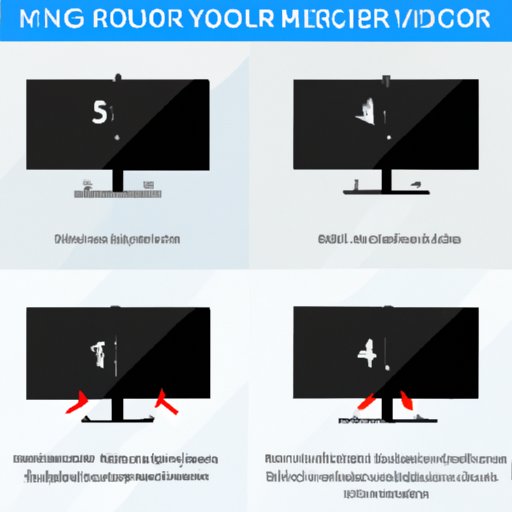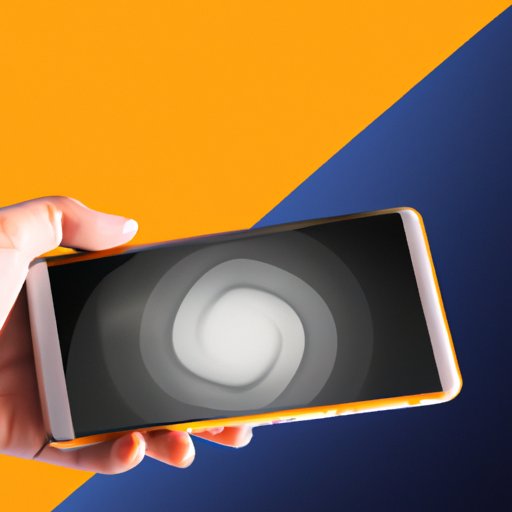Introduction
Do you wish there was a more convenient way to enjoy your mobile content on your TV’s larger screen? Connecting your smartphone to your TV can breathe new life into your entertainment experience. You can easily watch your favorite shows, stream your favorite music, or even play mobile games on a larger screen. This article aims to detail seven simple ways to get your phone connected to your TV effortlessly. Whether you’re tech-savvy or not, using any of these methods will have you enjoying your mobile content on the big screen in no time.
7 Steps to Connecting Your Smartphone to Your Television
One of the most common ways to connect your phone to your TV is to use a cable. Here are seven simple steps to follow:
- Determine the type of cable that is compatible with your phone and TV.
- Connect one end of the cable to your phone’s charging port and the other end of the cable to your TV’s input port.
- Turn on your TV and switch to the input channel you connected your phone to.
- Unlock your device and make sure it is set to “allow file transfer.”
- Confirm that your phone is connected to your TV by checking if it displays on the TV screen or selecting the input channel.
- Start streaming or watching your content on the TV.
- When you are done, unplug the cable from your phone and TV.
It’s that simple! However, if you encounter any problems while connecting your devices, here are some tips:
- Make sure you use a compatible cable that can transmit both audio and video signals.
- Make sure the cable is properly connected to both devices.
- Restart both devices if you encounter any problem.
- Adjust the TV resolution if the picture on the screen appears stretched or misplaced.
- Make sure your phone’s battery is charged to avoid interruptions while streaming.

How to Mirror Your Phone Screen on TV in 5 Easy Steps
Mirroring your phone screen on your TV can be done wirelessly. Here’s how to do it in five easy steps:
- Connect both your phone and TV to the same Wi-Fi network.
- Turn on the Wi-Fi of both devices.
- Swipe down from the top of your phone’s screen to reveal the “Quick Settings” panel, then select “Smart View” or “Screen Mirroring.”
- Select your TV from the device list that appears on your phone’s screen.
- Start streaming or watching your content on TV.
One of the significant benefits of using screen mirroring is that you can share your phone’s screen with multiple viewers. However, if you encounter any problems while connecting your devices, here are some tips:
- Ensure that your devices are on the same Wi-Fi network.
- Ensure that your phone is compatible with your TV and that your TV supports screen mirroring technology.
- Restart both devices if you encounter any problem.
- Check your phone’s resolution and adjust it if it appears stretched or misplaced on your TV screen.
- Check your TV’s user manual to determine the necessary steps for mirroring your phone’s screen successfully.
The Ultimate Guide to Connecting Your Phone to Your TV: Tips and Tricks
Whether you’re using a wireless connection, cables, or both, here are some tips and tricks to help you connect your phone to your TV:
- Use a Wi-Fi-enabled compatible TV to connect wirelessly with your phone.
- Use an HDMI-compatible adapter to improve the audio and video quality of streaming.
- Consider using a Chromecast or other similar streaming devices to enable streaming from your phone to your TV.
- Ensure that your phone and TV are equipped with the latest software updates to avoid compatibility issues.
- Battery life is essential when streaming. Therefore, consider using a USB smartphone charger to maintain your battery’s optimal condition.
- Investigate troubleshooting tips if you encounter any problems while connecting your phone to your TV.
- Invest in a quality cable or dongle to ensure stability and avoid signal drops.
- Consider strategies for improving your home’s Wi-Fi signal for a better streaming experience.
- Use TV optimization settings to improve streaming experiences, such as video and audio quality.
Stream It Up: 4 Different Ways to Connect Your Smartphone to Your TV
There are various ways to connect your phone to your TV, apart from using cables or screen mirroring. Here are four less-used but effective methods:
- USB C to HDMI adapter.
- DLNA (Digital Living Network Alliance).
- Smart TV app.
- Bluetooth.
Each method has its pros and cons. The method that works best for you depends on your device’s compatibility, budget, and intended applications. Here’s an analysis of each method:
- USB C to HDMI adapter. This method provides favourable output quality and low latency in transmitting audio and video signals. However, it can be expensive, and it requires a compatible TV with an HDMI slot.
- DLNA. This method is ideal for file sharing between devices on the same Wi-Fi. You can stream your files on any DLNA-supported device, including smart TVs, gaming consoles, and media players. However, the signal strength can be inadequate for streaming video content.
- Smart TV app. This method doesn’t require any additional equipment or cables. Instead, you can connect your phone to your TV using pre-installed apps like Apple TV, Roku, or Amazon Firestick. However, you require a Smart TV that supports the same app you want to use and a stable Wi-Fi signal.
- Bluetooth. Bluetooth connections are less complicated and don’t require any additional equipment. However, the quality of audio and video may not be optimal, and there is also a risk of signal interference.
Wireless or Wire: 2 Ways to Connect Your Phone to Your TV
Does your preference lean towards wired or wireless connections when connecting your phone to your TV? Here is a comprehensive comparison between wireless and wired connections:
- Wireless. Wireless connections are most preferred because of their ease of use and convenience. Screen mirroring technology allows you to watch or stream your mobile content on your TV without the need for any cables. This method also allows you to control playback from your phone. However, the quality of output may not be as good as that provided by wired connections.
- Wired. Wired connections may be more complicated to set up, but they provide stable and high-quality video and audio output. Additionally, wired connections enable you to use your TV’s remote control to manage your playback. However, the cables may be unsightly and messy, and the process of setting up may be complicated for some users.
A Beginner’s Guide to Connecting Your Phone to Your Television
If you’re new to connecting your phone to your TV, here is a simple guide to help you through the process:
- Determine the type of connector that your phone and TV support.
- Choose the method that best suits your needs and budget.
- Connect your phone to your TV using the method you selected.
- Turn on your TV and switch to the input channel where you connected your phone.
- Confirm that your phone is connected to your TV and that the signal is optimal.
- Stream or watch your content on your TV.
Maximize Your Entertainment: Learn the Best Ways to Connect Your Phone to Your TV
In summary, connecting your phone to your TV is an easy and convenient way to make the most of your entertainment experience. Here are the best ways to connect your phone to your TV:
- Wired connections using HDMI cables or USB to HDMI adapters.
- Wireless connections using screen mirroring technology like Chromecast or Apple TV.
- DLNA or Smart TV apps to access streaming services on your TV.
- Bluetooth connections to connect to speakers or soundbars.
Choose a method that best suits your needs, budget, and entertainment preferences. With this guide, you can confidently connect your phone to your TV and enjoy your entertainment on a larger screen.
